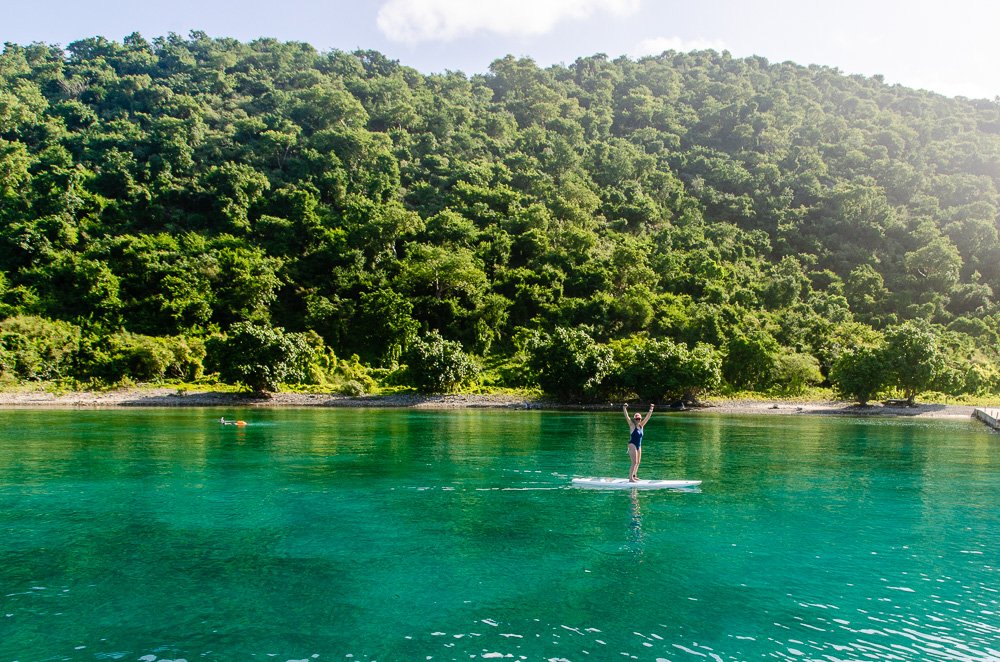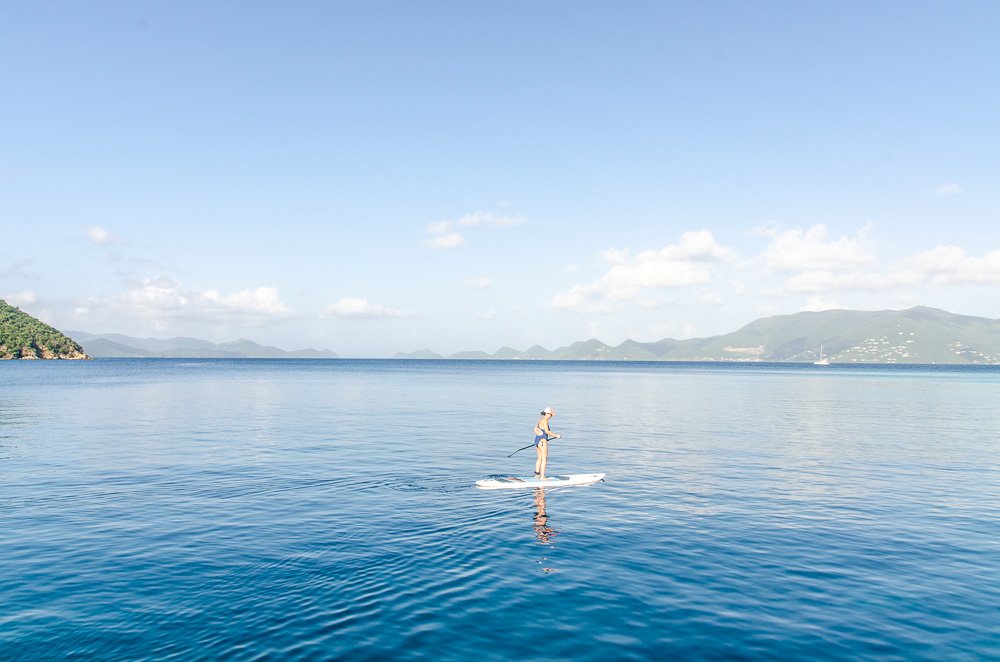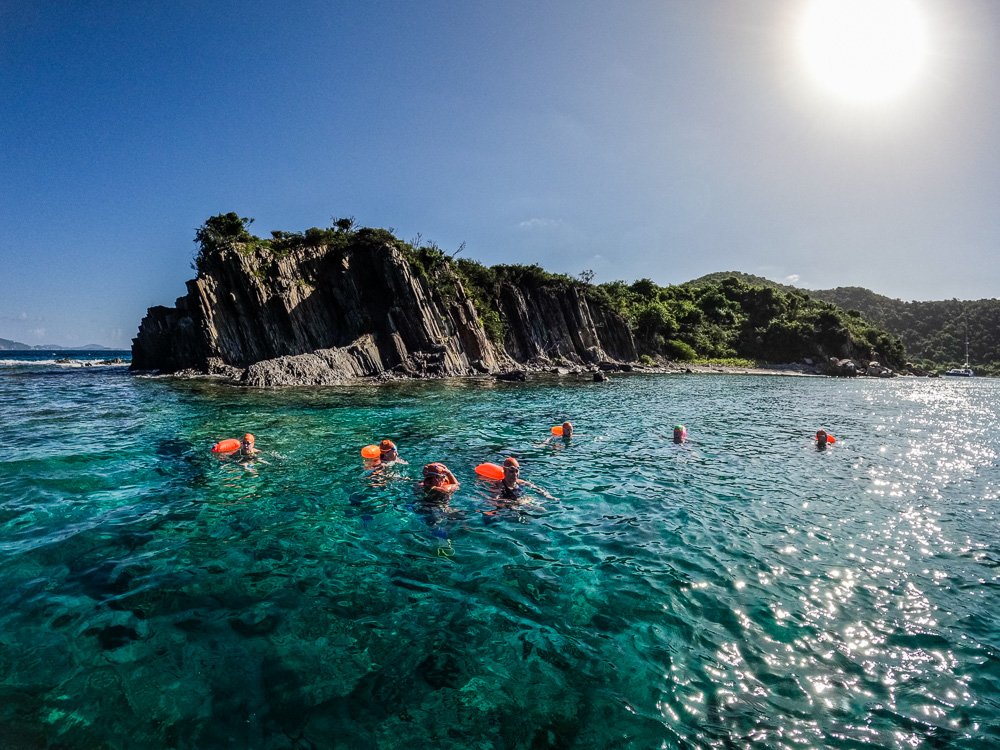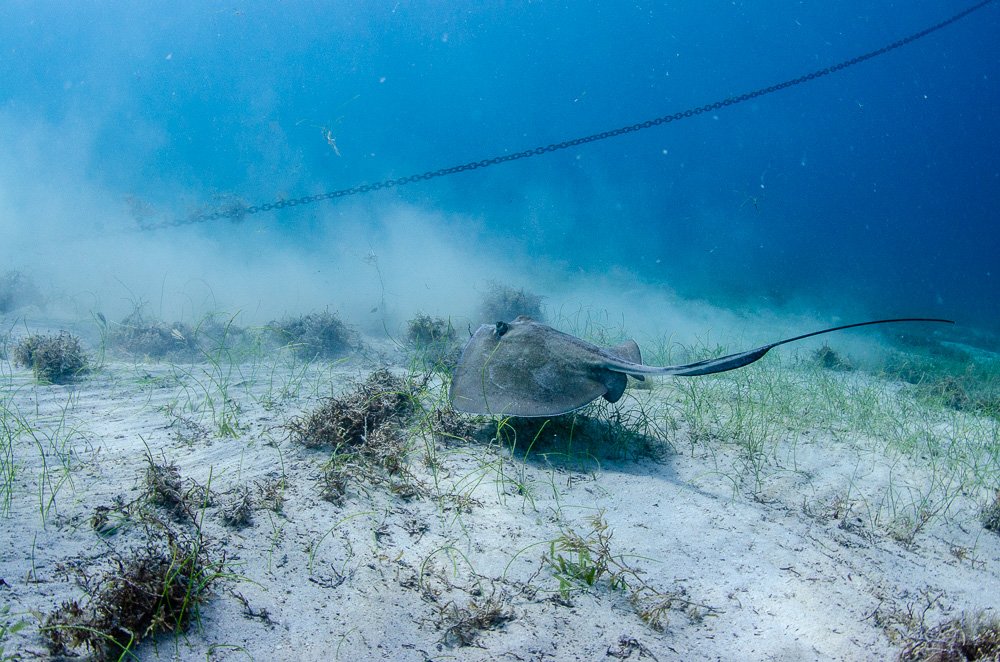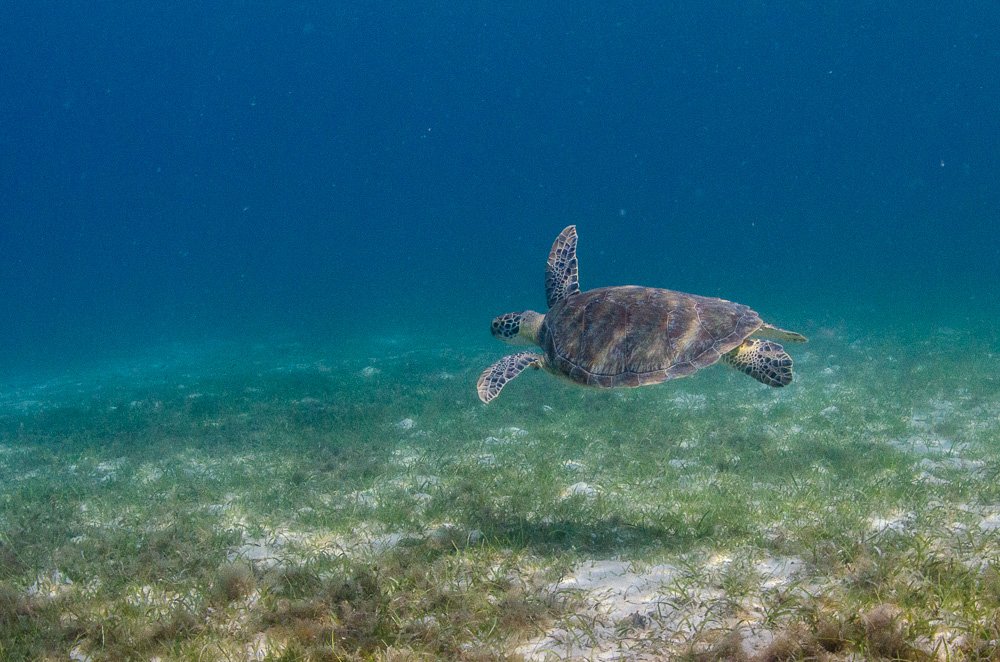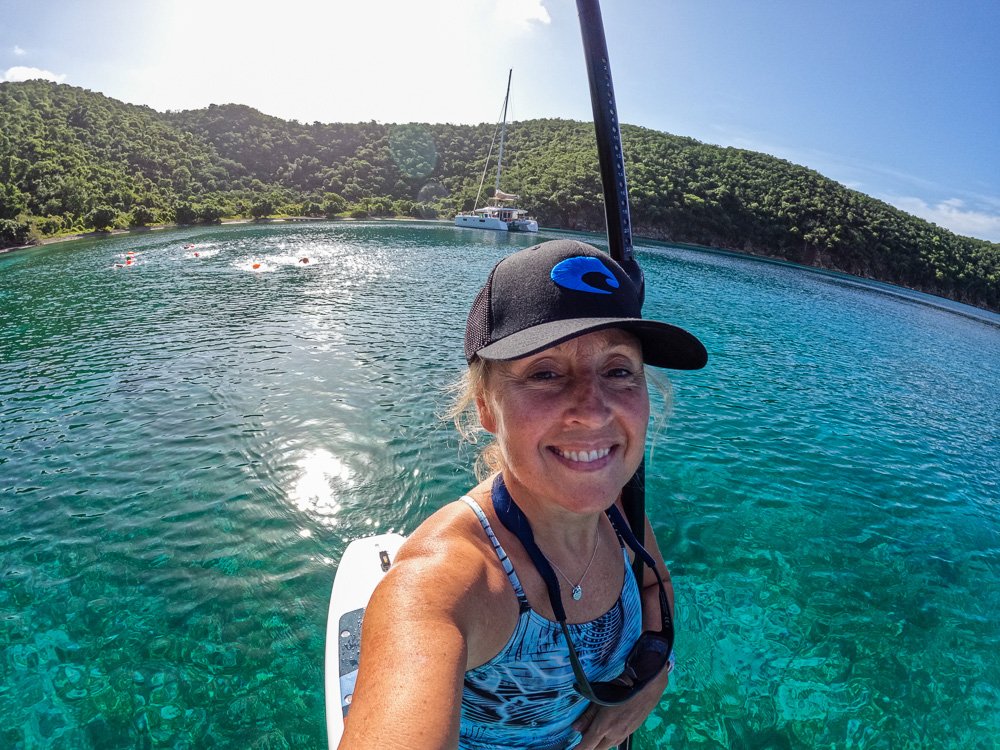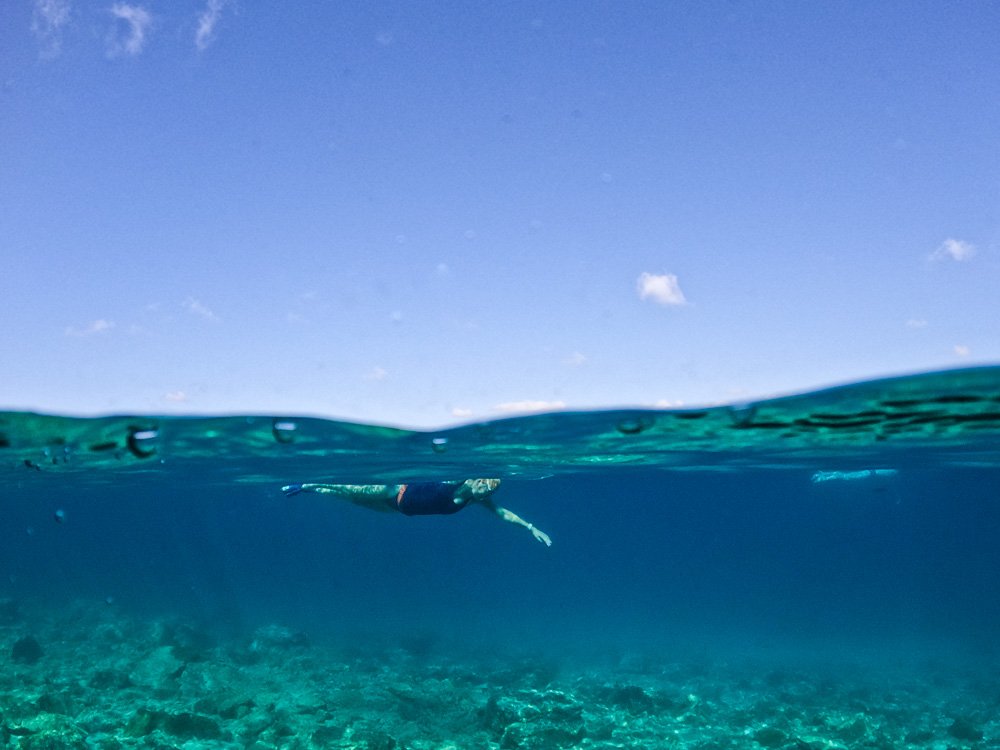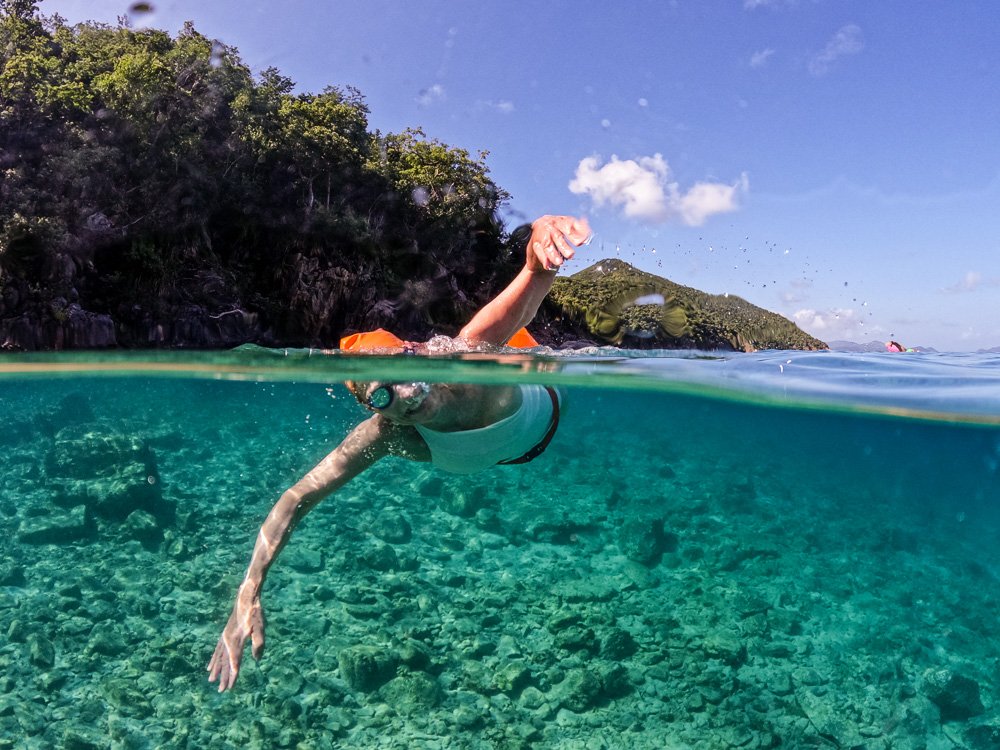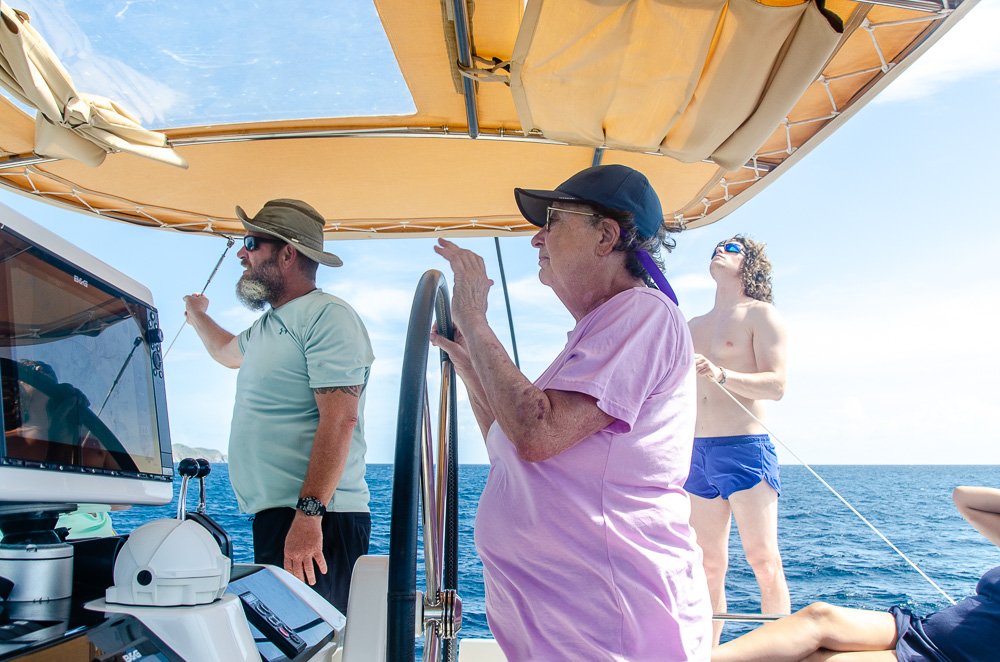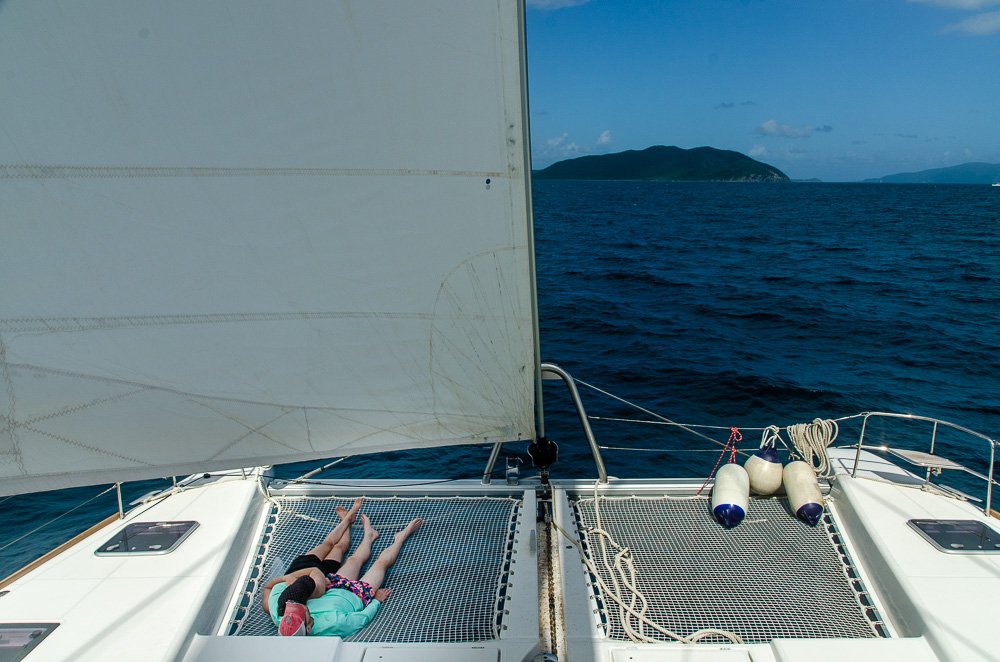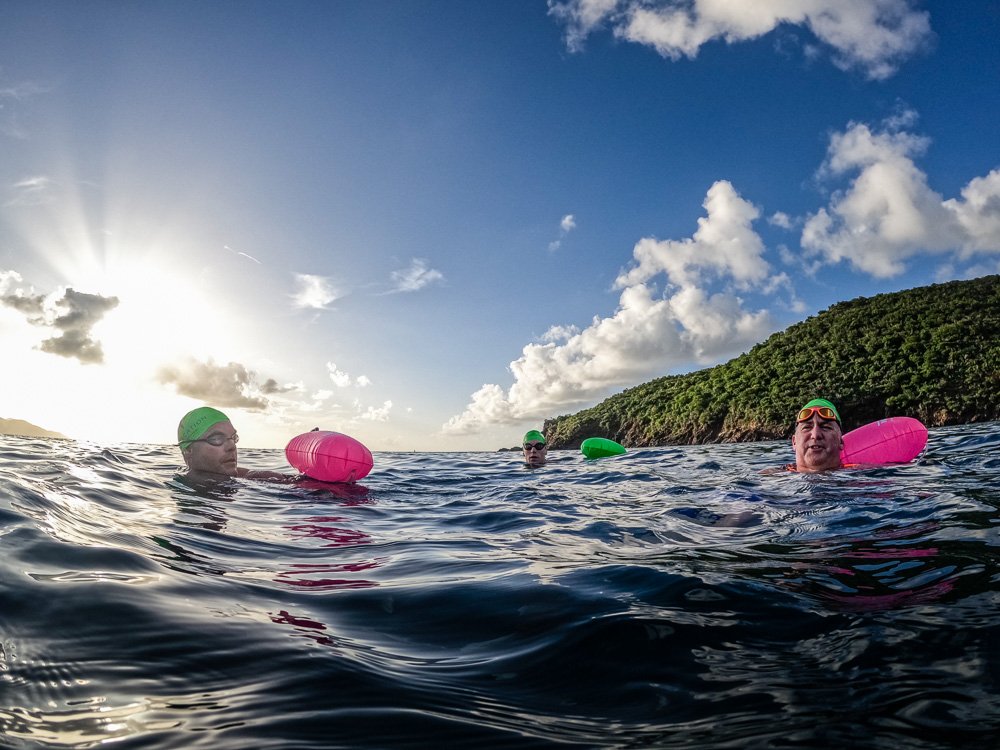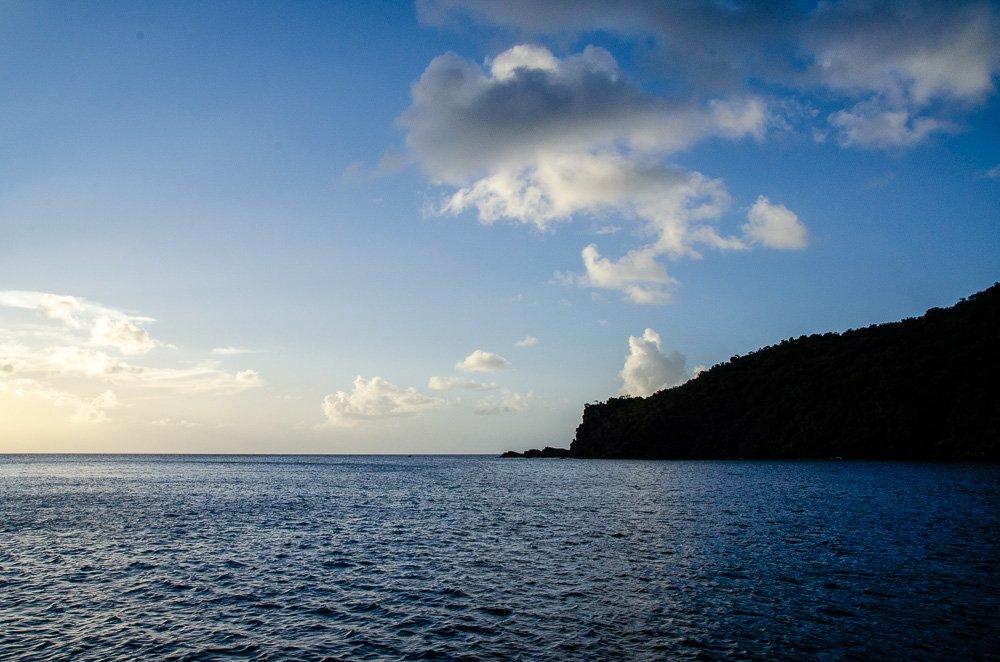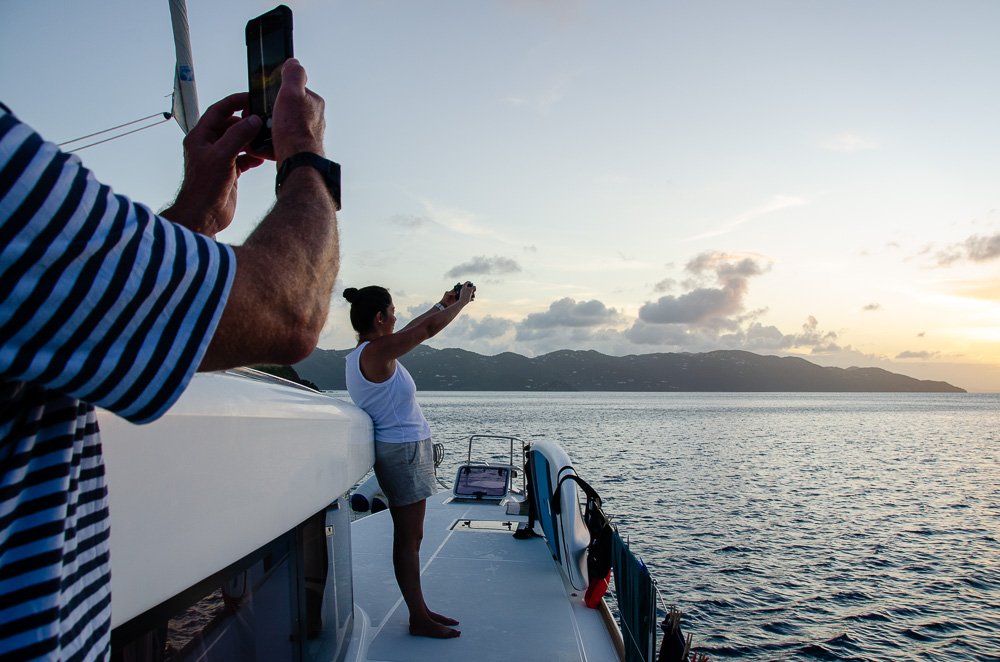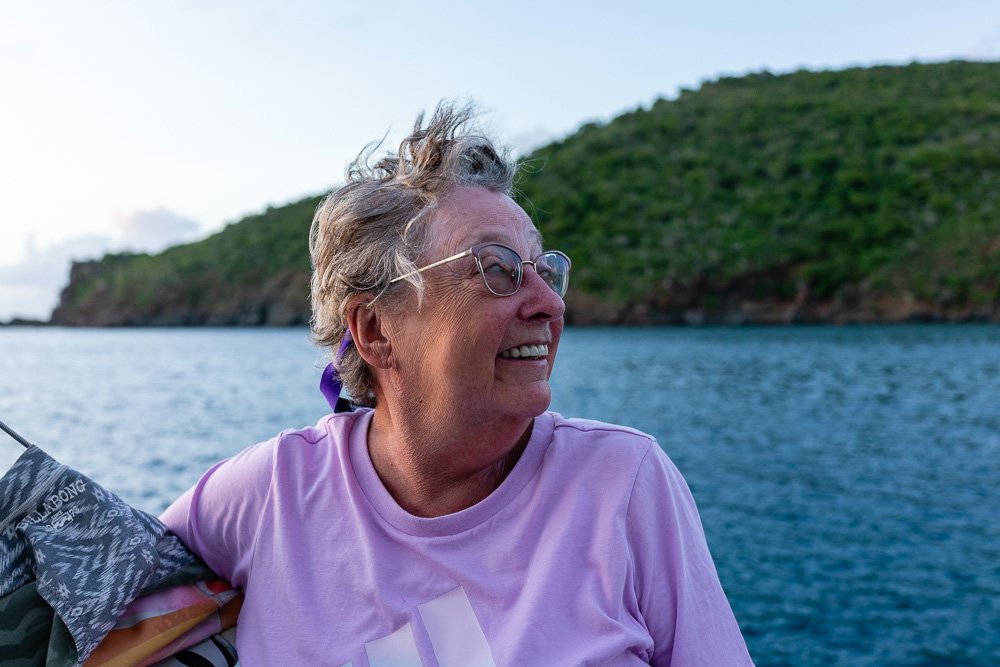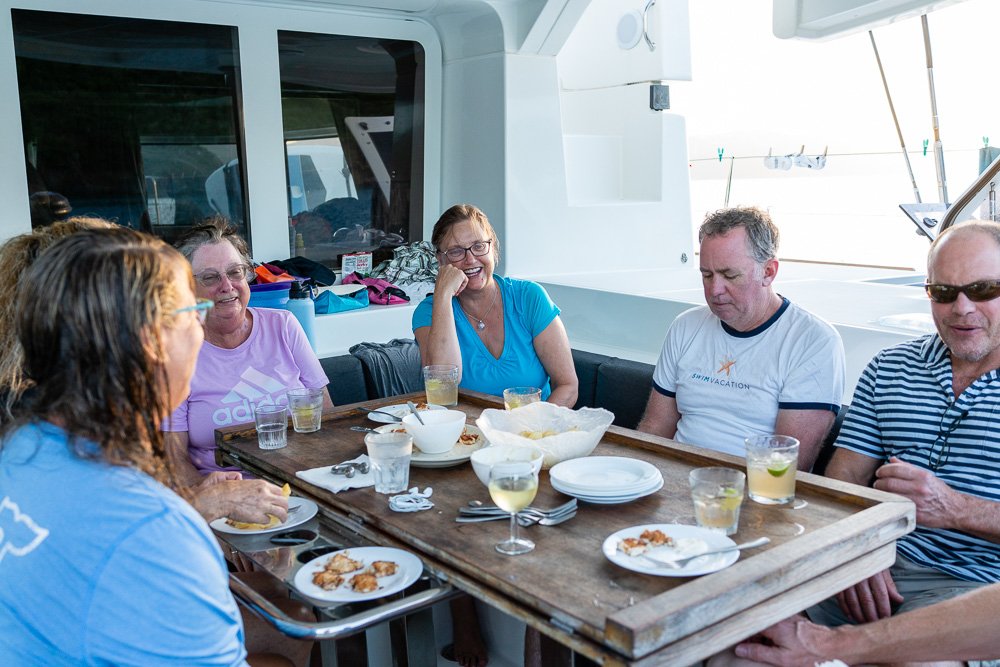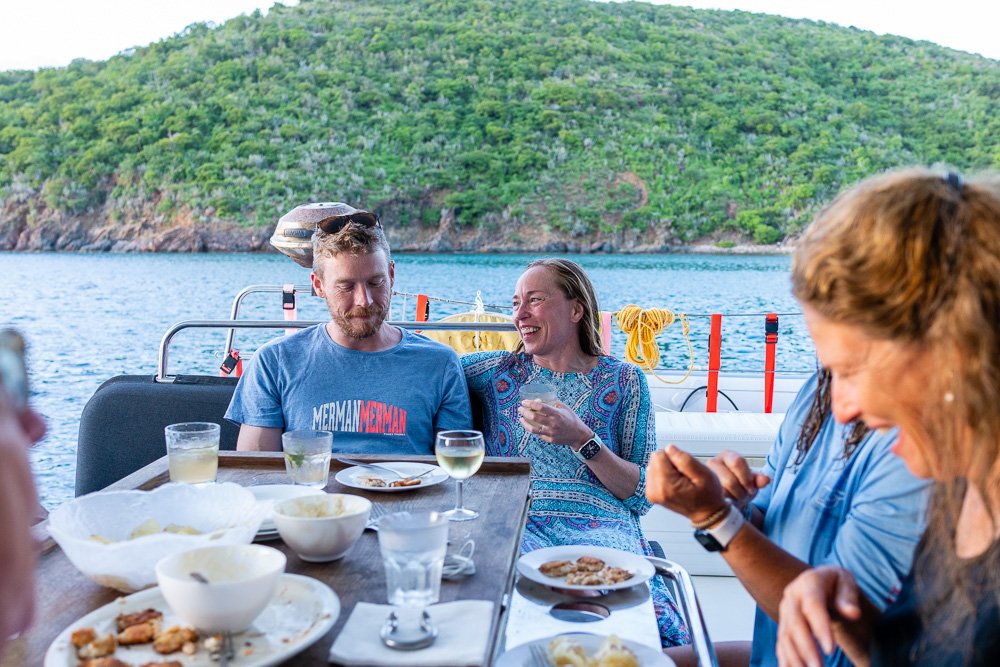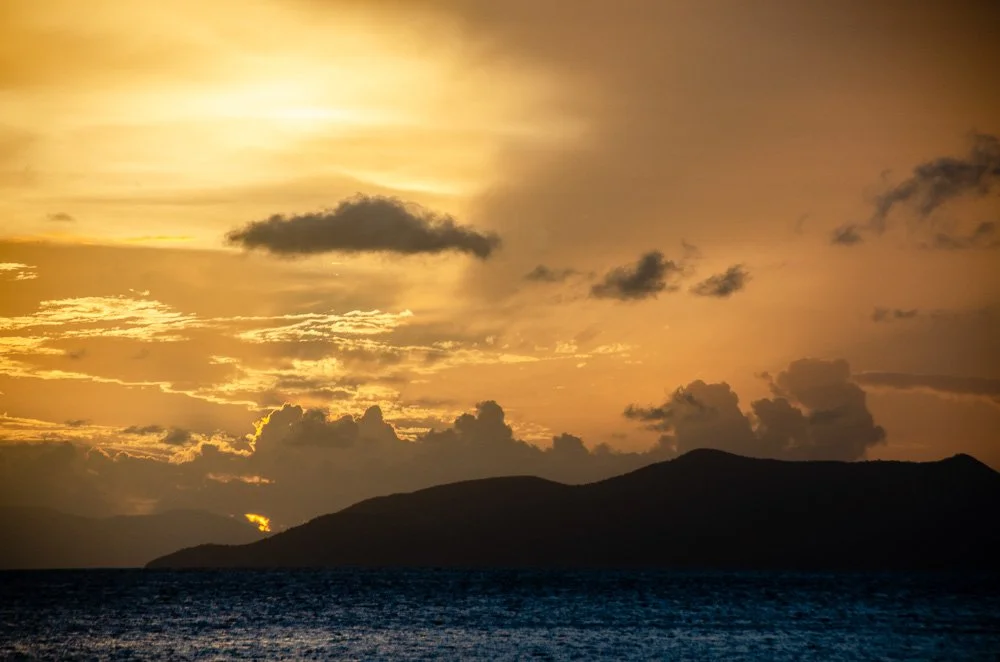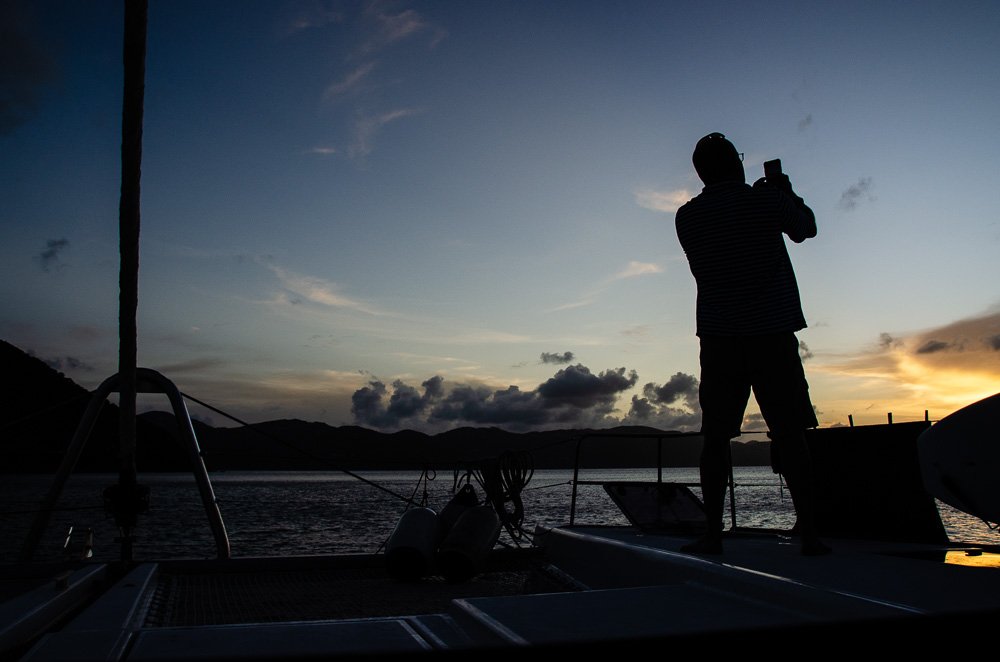Happy places.
The BVI has more than its share of Happy Places, those spots where time slows, the sun shines a little brighter, the colors seem a little brighter. I have one of these spots in my backyard, in my hammock strung between the branches of an apple tree, in sight of my flower meadow, Chickadees singing in the tree, sometimes with my flock of hens scratching and pecking beneath me, the Red sox beating the Yankees on the radio.
Little Harbor on Peter Island is one of those Happy Places in the BVI. The water is a bright turquoise, the trees lining the shore bright green, the ruins of a house built in the 20s overlooking the whole scene. Turtles lazily surface and submerge, schools of fish dance at the surface. Today, for the first time I can remember, we had the place mostly to ourselves. We used to run this trip the first week of December, but this year moved it to early November to dodge the pesky “Christmas winds” that seem to arrive earlier every year. One benefit we didn’t see coming was the reduction in the number of other travelers and charter boats. It’s been downright sleepy.
We swam the heck out of Little Harbor this morning, with a full circumnavigation. This included a deep-water crossing of the mouth of the bay, where moon jellies drifted harmlessly beneath us. Guest Heather swam further without a break than she ever had in her life. A proud moment, shared by all the guests.
Zack raised the anchor and we set sail in the Drake Channel, heading north to Guana Island. Favorable winds allowed for smooth sailing, and it was one of the few times I didn’t drop a dramamine on a journey like this. We passed Salt, Cooper, and Ginger Islands, then Virgin Gorda, Rounded Beef Island at the airport, past our base marina at Scrub Island, then through the channel created between Tortola and the Camanoe Islands. Captain Richie took us out to the Atlantic for our approach to Guana Island. On the windy side, waves crashed 20 feet up the sheer cliffs, sending spray even higher.
Muskmelon Bay is an outlier. It’s a bay that doesn’t behave like one. It throws tantrums. If it could talk, it would say to us: “Hi again! You want a downpour? Lightning? A rainbow? Wildlife? Shall I steal your hat? Here's some sea lice! How about some sunshine? Oh here’s more rain for you!” This place has it out for Guide Heather. She often leaves here exhausted, thrilled, covered in bites or stings of some sort, and missing at least 1 piece of gear or clothing. (Truth! HP)
Jumping in for a 4pm swim, we stroked along the back wall of the bay. The water was a little murky, and the angle of the light on the coral heads below made for a moody scene. Marcus, who has had an eagle eye all trip, spied a Caribbean lobster. It had no fear of us, like the Maine lobsters back home only without the big front claws. Conditions looked even creepier as we hit the back corner of the bay, So I turned the group around. It’s a common sense thing. Here’s a better explanation:
I preface this by reminding the reader that sharks kill an average of 4 people a year in the entire world. Humans kill over 100 Million sharks per year. To respect their habitat, we avoid swimming:
In the dark
In turbid water
At the mouth of rivers, streams, etc
In areas where very large “baitballs” exist, often recognized by very large flocks of birds above.
Anywhere else that feels “sharky” to our very experienced guides.
That said, we love to see reef sharks or nurse sharks during our swims, though it's fairly rare. They’re an important part of a healthy ecosystem - a good sign for the marine environment.
Back aboard Yacht Malcoha, Dark n Stormys washed down an app of little crab cakes. Ali made a rich Shrimp Scampi Risotto that paired nicely with an Australian Shiraz. Everyone was in the sack before 10pm, a sign we’ve been swimming them hard and well.
Hopper


